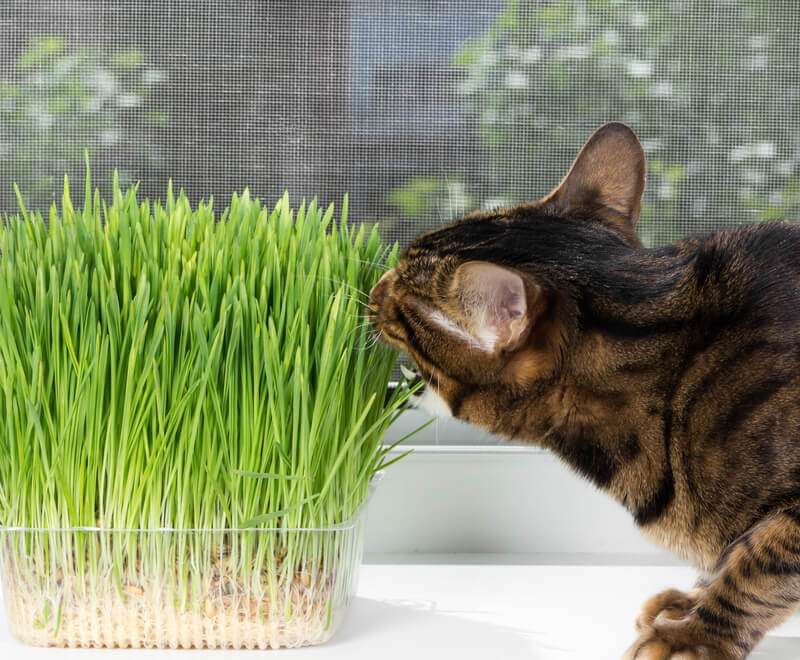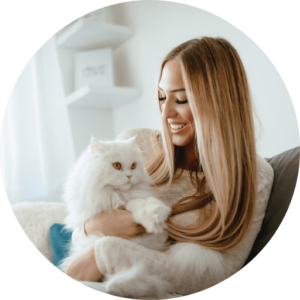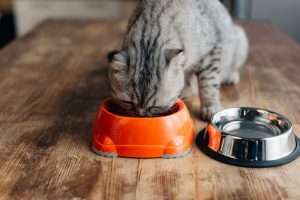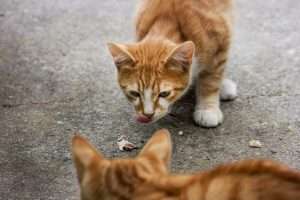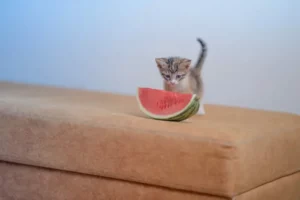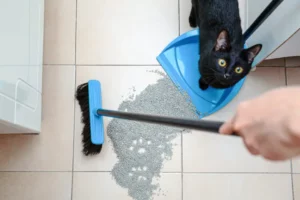Table of Contents
Seaweed is a type of algae that is commonly found in many different forms, including dried, fresh, and in supplement form. As a nutrient-rich food, it has gained popularity among health enthusiasts and those seeking a more plant-based diet. However, the question remains: can cats eat seaweed? In this article, we will explore the topic of seaweed and cats.
A balanced diet is essential for the health and wellbeing of cats, just as it is for humans. Cats require a specific balance of nutrients in their diet, including protein, fat, carbohydrates, vitamins, and minerals. As such, it is important for cat owners to understand what foods are safe for their feline friends to consume.
This article will examine the topic of cats and seaweed, exploring the potential risks and benefits of including seaweed in a cat’s diet. We will also offer alternative options for providing cats with the nutrients they need.
Nutritional Value of Seaweed for Cats
Seaweed is a type of marine algae that has been consumed by humans and animals for centuries. It is a rich source of various vitamins, minerals, and antioxidants that are beneficial for overall health. Seaweed can be found in different forms such as dried, fresh, or as a supplement. In this section, we will discuss the nutritional value of seaweed for cats and why it can be a healthy addition to their diet in moderation.
Seaweed is a low-calorie food that is high in fiber, which makes it an excellent choice for maintaining a healthy digestive system in cats. It also contains various vitamins such as A, C, E, and K, which can improve a cat’s immune system function, promote healthy skin and coat, and aid in vision. Seaweed is also a good source of minerals such as iron, calcium, and iodine, which are essential for the proper functioning of the thyroid gland and overall health. Iodine is particularly important for cats because a deficiency in this mineral can lead to hypothyroidism, a condition that affects the metabolism and can cause weight gain, lethargy, and other health problems.
Feeding cats small amounts of seaweed can provide them with numerous benefits. However, it’s essential to ensure that you don’t overfeed your cat with seaweed as it can lead to potential health risks. In the next section, we will discuss the potential risks and harm of feeding seaweed to cats.
Risks and Harm of Feeding Seaweed to Cats
While seaweed can offer numerous nutritional benefits for cats, it’s important to understand the potential risks and harm associated with feeding it to felines.
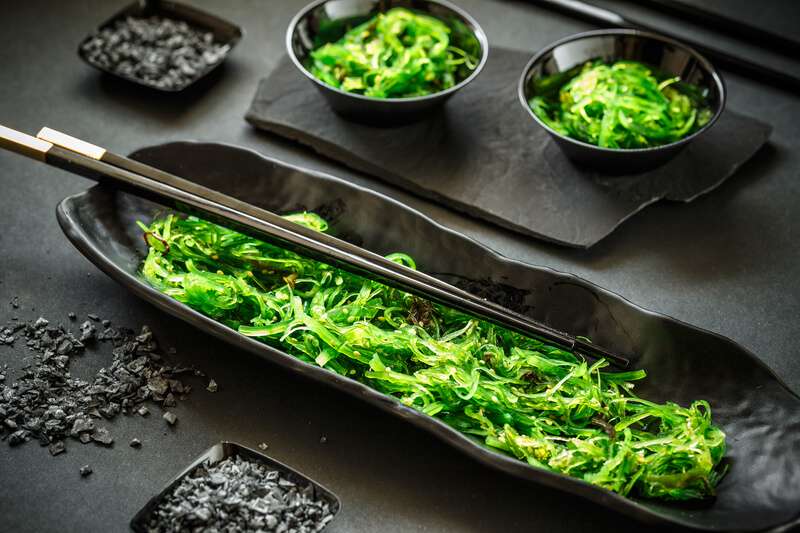
Can Cats Eat Seaweed?
Yes, cats can eat seaweed, but it’s important to feed them in moderation and select the appropriate type. Seaweed is often used as a supplement in commercial cat food and can provide several health benefits.
Potential risks and harm of feeding seaweed to cats
Digestive problems: Seaweed is high in fiber, which can help improve digestion, but too much of it can lead to digestive problems such as diarrhea and vomiting.
Iodine toxicity: Seaweed is naturally high in iodine, which is an essential nutrient for cats. However, consuming too much iodine can lead to iodine toxicity, which can cause serious health problems, such as thyroid gland dysfunction and even death.
Allergic reactions: Some cats may be allergic to seaweed, just like any other food. If your cat shows any signs of an allergic reaction, such as itching, swelling, or difficulty breathing, stop feeding seaweed immediately and contact your veterinarian.
Exceptions to feeding seaweed to cats
Cats with iodine sensitivity: Cats with certain health conditions, such as hyperthyroidism, may be sensitive to iodine and should avoid seaweed or any other high-iodine foods.
Cats with kidney disease: Seaweed is high in potassium, which can be harmful to cats with kidney disease. If your cat has kidney disease, it’s important to consult with your veterinarian before adding any new food to their diet.
Overall, seaweed can be a healthy addition to a cat’s diet, but it’s important to feed them in moderation and select the appropriate type. It’s also crucial to keep an eye on your cat’s reactions and consult with your veterinarian if you have any concerns about their health.
Alternatives to Seaweed for Cats
While seaweed can be a healthy addition to a cat’s diet in moderation, it’s important to offer a variety of foods to ensure your cat is getting all the necessary nutrients. Here are some safe alternatives to seaweed that can be included in a cat’s diet:
Cooked Meat or Fish: Cats are obligate carnivores, which means they need meat to thrive. Cooked meat or fish can be a great source of protein, essential fatty acids, and other important nutrients. Be sure to remove any bones and skin before feeding, and avoid feeding raw meat or fish to prevent the risk of bacterial contamination.
Spinach: Spinach is a leafy green vegetable that is safe for cats in moderation. It’s a good source of fiber, vitamins A and C, and iron. To prepare spinach for your cat, steam or blanch it and then chop it into small pieces.
Pumpkin: Pumpkin is a great source of fiber and can help regulate digestion in cats. It’s also rich in vitamins A and C, potassium, and beta-carotene. To prepare pumpkin for your cat, cook it and then mash or puree it before serving.
It’s important to note that these alternatives should not be used as a replacement for a balanced diet. Cats require a specific balance of nutrients in their diet, including protein, fats, vitamins, and minerals. Talk to your veterinarian about how to incorporate these foods into your cat’s diet and ensure they are getting all the necessary nutrients.
When choosing cat food, it’s important to look for high-quality brands that meet the nutritional requirements set by organizations such as the Association of American Feed Control Officials (AAFCO). These brands will have a statement on their packaging that says they meet AAFCO nutrient profiles or have undergone AAFCO feeding trials.
In addition to providing a balanced diet, it’s important to offer your cat plenty of fresh water and avoid feeding them table scraps or other human foods that can be harmful to their health.
Overall, while seaweed can be a healthy addition to a cat’s diet, it’s important to offer a variety of safe and nutritious foods to ensure your cat is getting all the necessary nutrients.

FAQs
Yes, some types of seaweed can be toxic to cats. For example, certain types of red algae can contain a toxin called domoic acid, which can cause seizures and other neurological problems in cats. It is important to research the specific type of seaweed before feeding it to your cat and consult with a veterinarian if you have any concerns.
It is recommended to feed seaweed to cats in moderation. A small amount, such as a teaspoon a day, can provide some health benefits without the risk of overconsumption. However, feeding too much seaweed can lead to digestive problems and excess iodine intake.
While there are some commercially available seaweed snacks for cats, it is important to check the ingredients and nutritional information before feeding them to your cat. Some snacks may contain added salt, sugar, or other ingredients that can be harmful to cats.
Seaweed can be a good source of vitamins, minerals, and antioxidants for cats. It contains iodine, iron, calcium, magnesium, and other minerals that are important for a cat's overall health. Seaweed also contains vitamins A, C, and E, which can support the immune system and promote healthy skin and coat.
Yes, some cats can be allergic to seaweed. Symptoms of an allergic reaction may include vomiting, diarrhea, or itching. If your cat experiences any of these symptoms after eating seaweed, it is important to consult with a veterinarian.
Conclusion
In conclusion, feeding cats seaweed can be a safe and healthy addition to their diet in moderation. Seaweed is a nutrient-rich food that provides cats with vitamins, minerals, and antioxidants that can improve their overall health and wellbeing. However, it’s important to be aware of the potential risks and harm of feeding too much seaweed to cats, such as digestive problems and consuming too much iodine. Additionally, some cats may have health conditions or allergies that make them unsuitable for seaweed consumption.
If you’re considering feeding seaweed to your cat, it’s important to speak with your veterinarian first to determine if it’s a good choice for your cat’s individual needs. Your vet can help you determine the appropriate amount of seaweed to feed your cat and provide guidance on incorporating it into their diet. It’s also important to ensure your cat’s diet is well-balanced and includes a variety of nutrient-rich foods, including alternatives like cooked meat or fish, spinach, and pumpkin.
Overall, understanding what foods are safe for your cat to eat and providing a well-balanced diet is crucial for their health and longevity. By following these guidelines and seeking the advice of your veterinarian, you can ensure your cat is getting the proper nutrition they need to thrive.


